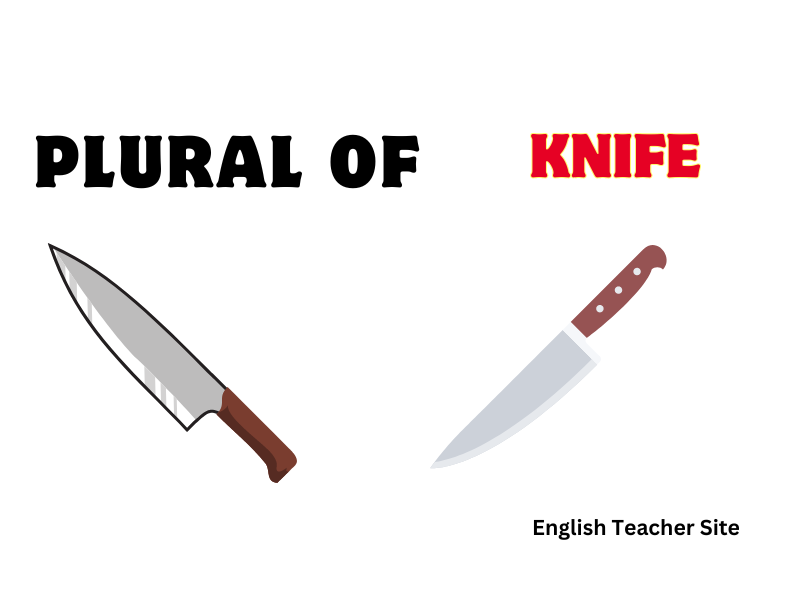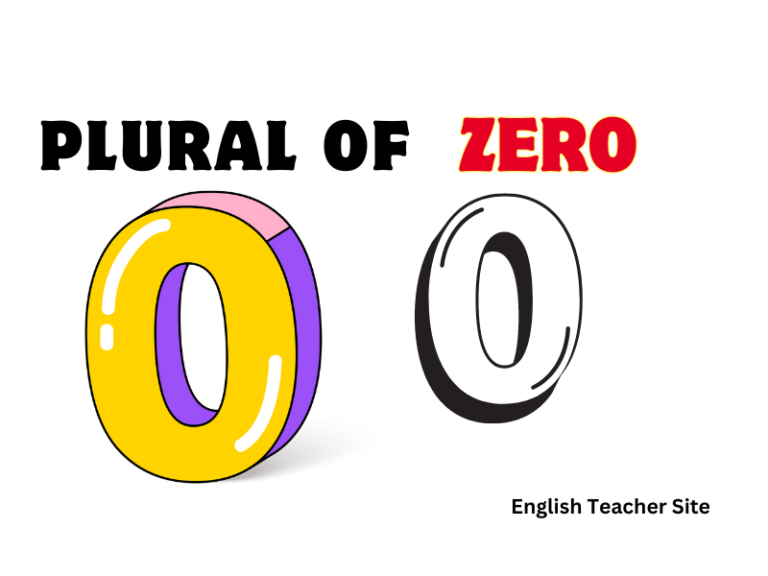What’s the Plural of Knife? Understanding English Irregular Plurals

- “Knives” is the correct plural form of “knife.”
- The transformation from “knife” to “knives” includes replacing the “f” with “ves.”
- This rule is specific to select nouns ending in “f” or “fe.”
When pluralizing “knife,” the correct form is “knives.” This change involves dropping the “f” and adding “ves,” which is a rule applicable to some nouns ending with an “f” or “fe.” Understanding the correct form not only helps in writing properly but also provides insight into some of the interesting patterns and exceptions within the English language.
What’s the Plural of “Knife”?
Knife, is a tool with a cutting edge and is used in the kitchen or as a utensil, tool, or weapon. When we refer to more than one, we do not simply add an “s” as we do with most other English nouns. Instead, the change involves a more complex spelling alteration. Looking at the plural form of “knife,” the correct pluralisation adheres to a specific rule for nouns ending in “f” or “fe.”
Below is a table that outlines the rule for “knife” and a few other selected nouns following a similar pattern:
| Singular | Plural |
|---|---|
| knife | knives |
| wife | wives |
| life | lives |
| half | halves |
When forming the plural, we replace the “f” with “ves”. This spelling change can be traced back to Old English, where certain changes in a word’s ending helped to convey its plural form.
- When setting a table: Please lay out the knives and forks.
- In cooking classes: Today each student must bring their own knives.
- Discussing a collection: Her collection includes several antique knives.
What’s the Plural of “Knife”?
The singular noun knife transforms into the plural form by replacing the ‘f’ with ‘ves’. Therefore, the correct plural of knife is knives. This pattern is consistent with other English nouns ending in ‘f’ or ‘fe’ that change to ‘ves’ in the plural form.
Regular vs. Irregular Plural Forms
The following tables illustrate the difference between regular and irregular plural forms, using knife as an example of an irregular noun.
Regular Plurals
| Singular | Plural |
|---|---|
| cat | cats |
| dog | dogs |
| book | books |
| car | cars |
Regular plurals generally just add an ‘s’ or ‘es’ to the singular form.
Irregular Plurals
| Singular | Irregular Plural |
|---|---|
| knife | knives |
| life | lives |
| wife | wives |
| leaf | leaves |
Irregular plurals vary and often change the word’s spelling.
Usage in Sentences
- The chef sharpened all the knives before dinner service began.
- She packed several knives for the camping trip.
- Always change: With words like knife, the transformation from singular to plural is consistent; the ‘f’ always changes to ‘ves’.
- Exception to note: Some modern English words ending in ‘f’ or ‘fe’ can add just ‘s’ to form the plural, like roof/roofs or chief/chiefs.
Defining a Knife – What Does It Mean?
In the realm of cutlery, a knife represents a fundamental tool, essential in a variety of tasks ranging from culinary endeavours to outdoor activities. At its core, a knife typically comprises two essential components: a sharp-edged blade and a handle, facilitating precision and control during use.
Primary Uses of a Knife:
- Culinary preparation
- Crafting and artistry
- Medical applications
- Outdoor activities
- Self-defense
The blade is often made of hard materials such as metal or ceramic, both recognized for their ability to maintain a sharp edge. Knives vary widely in design, catering to specific uses like slicing bread, carving wood, or performing delicate surgery.
Key Parts of a Typical Knife:
| Part | Description |
|---|---|
| Point | The tip of the blade used for piercing |
| Edge | The cutting side of the blade |
| Spine | The non-cutting back of the blade, giving it stability |
| Handle | The part by which the knife is held and maneuvered |
| Bolster | Thick junction between handle and blade for balance and safety |
What’s the Plural of Knife?
The plural of knife is knives. This follows a common pattern in English where the singular form ending in f or fe changes to ves in the plural form. Here is a brief guide to help remember this transformation:
| Singular Form | Plural Form |
|---|---|
| knife | knives |
This change also applies to other nouns ending in f or fe:
| Singular | Plural |
|---|---|
| life | lives |
| leaf | leaves |
| wife | wives |
- Exceptions: However, note that there are exceptions where words ending in f or fe simply add an s to become plural, such as in “roofs” or “chefs.”
Usage in Sentences:
- Singular: Please pass me a knife.
- Plural: All the knives in the drawer are sharp.
Nouns Ending in -f/-fe and –ves
Standard Conversion Rule
Many nouns that conclude with -f or -fe adhere to the standard rule of forming their plural by substituting -f or -fe with -ves. Below is a table illustrating some examples of this rule:
| Singular | Plural |
|---|---|
| knife | knives |
| wife | wives |
| life | lives |
| leaf | leaves |
| thief | thieves |
Exceptions to the Rule
However, it’s important to note that not all nouns ending in -f/-fe follow this pattern. Some nouns retain the original -f and simply append an -s or -es in their plural form. Here are some examples where the -f/-fe ending does not change to -ves:
| Singular | Plural |
|---|---|
| roof | roofs |
| belief | beliefs |
| chef | chefs |
| chief | chiefs |
Words to Watch
When pluralizing nouns ending in -f/-fe, it’s essential to be aware of these guidelines and keep an eye out for exceptions. Here are some key points:
- Most nouns ending in -f/-fe form their plural by changing to -ves.
- Some nouns are exceptions and just add -s or -es.
Examples of Knife Used in Context
Singular Form of Knife
| Sentence Example | Explanation |
|---|---|
| She sharpens the knife before cooking. | Singular form used when referring to one knife. |
| He discovers a knife in the drawer. | Indicates a single knife found. |
Plural Form of Knives
The plural form of knife is knives, which follows the rule of changing the “f” to “v” before adding “es.”
| Sentence Example | Explanation |
|---|---|
| The chef chooses different knives for various tasks. | Plural form used for more than one knife. |
| They pack several knives for the camping trip. | Implies a collection of knives being packed. |
- Knives are essential tools in both the kitchen and for outdoor activities.
- A set of knives may include a chef’s knife, a paring knife, and a bread knife.
- Many cuisines rely on specialized knives for certain cuts.
- Proper care is essential to maintain sharp knives.
In literature or sales catalogs, the usage of knife and knives may be highlighted to address the number of items being referred to or the type of action being described:
- The character pulls a knife from his boot – a tense moment in a story.
- Assorted knives are on sale this week – an advertisement for kitchenware.
Examples of the Word “Knives” in Sentences
Below are examples that illustrate how to correctly use the term “knives” in various sentences.
Use in Domestic Context:
- In the kitchen, chefs rely on their sharp knives to prepare ingredients efficiently.
- The drawer was neatly organized, containing an array of knives for different culinary tasks.
Table 1: Kitchen Use
| Sentence | Usage Context |
|---|---|
| She carefully selected one of the steak knives from the set. | Choosing cutlery for dining |
| After the meal, all the knives were gathered for cleaning. | Post-meal kitchen clean-up |
Use in Outdoor Activities:
- Campers should always carry knives for utility purposes when exploring the wilderness.
- The display of antique knives attracted enthusiasts at the outdoor expo.
Table 2: Outdoor Use
| Sentence | Usage Context |
|---|---|
| Their belts held multipurpose knives, essential for survival. | Describing gear attachments |
| He demonstrated how to safely use knives for building a shelter. | Instruction on tool application |
Examples in Literature and Speech:
- “Knives” can slice through both literal and metaphorical obstacles. (metaphorical use)
- The characters in the novel had ornate knives, which were symbols of their status. (symbolic use)
In Crafting and Art:
- Artisans use specialized knives to intricately carve wood.
- Leatherworkers have a set of knives designed for cutting and shaping their material.
Synonyms for the Word “Knife”
General Synonyms:
| General Terms | Usage Context |
|---|---|
| Cutter | General cutting tool |
| Blade | Focuses on the sharp aspect |
| Shank | Often refers to a homemade or improvised knife |
Specialized Knives:
| Specialized Types | Usage Context |
|---|---|
| Dagger | A weapon with a pointed, double-edged blade |
| Bayonet | A blade attached to the muzzle of a rifle |
| Machete | A broad, heavy knife for cutting vegetation |
It’s important to consider the context in which these terms are used, as they may convey more specific meanings. For example:
- Dagger often implies a sense of danger or combat.
- Machete suggests an outdoor utility use.
When discussing kitchenware, other synonyms such as carving knife, chef’s knife, or paring knife emphasize the tool’s function in food preparation.
Origin of the Word “Knife/Knives”
The word “knife” comes from the Old English word “cnif,” which can be traced back to the Proto-Germanic “kniban,” meaning to cut. The term has Norse roots as well, related to the word “knifr.” Over the centuries, “knife” has evolved in form but has consistently referred to a cutting instrument.
| Singular | Plural |
|---|---|
| knife | knives |
| leaf | leaves |
| life | lives |
Further exploration shows that not all words following this pattern keep the original base of the singular form when becoming plural:
- Scarf becomes scarves
- However, roof can become either roofs or rooves
Sources
My name is Khamis Maiouf. I am the creator of the English Teacher Site, dedicated to providing valuable resources and insights for students around the world. With a passion for education and a commitment to helping students enhance their skills, I aim to make English teaching more effective and enjoyable for both educators and students.





